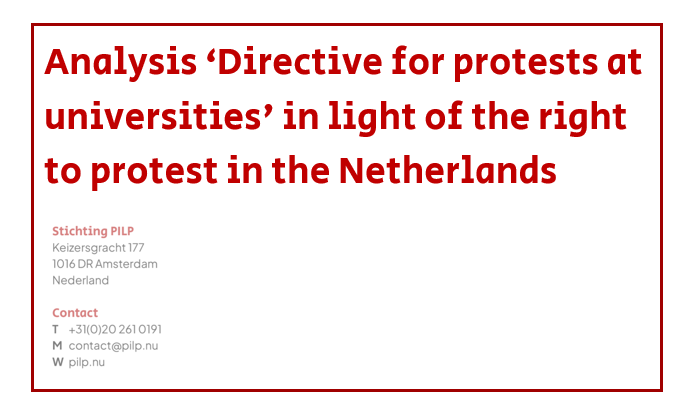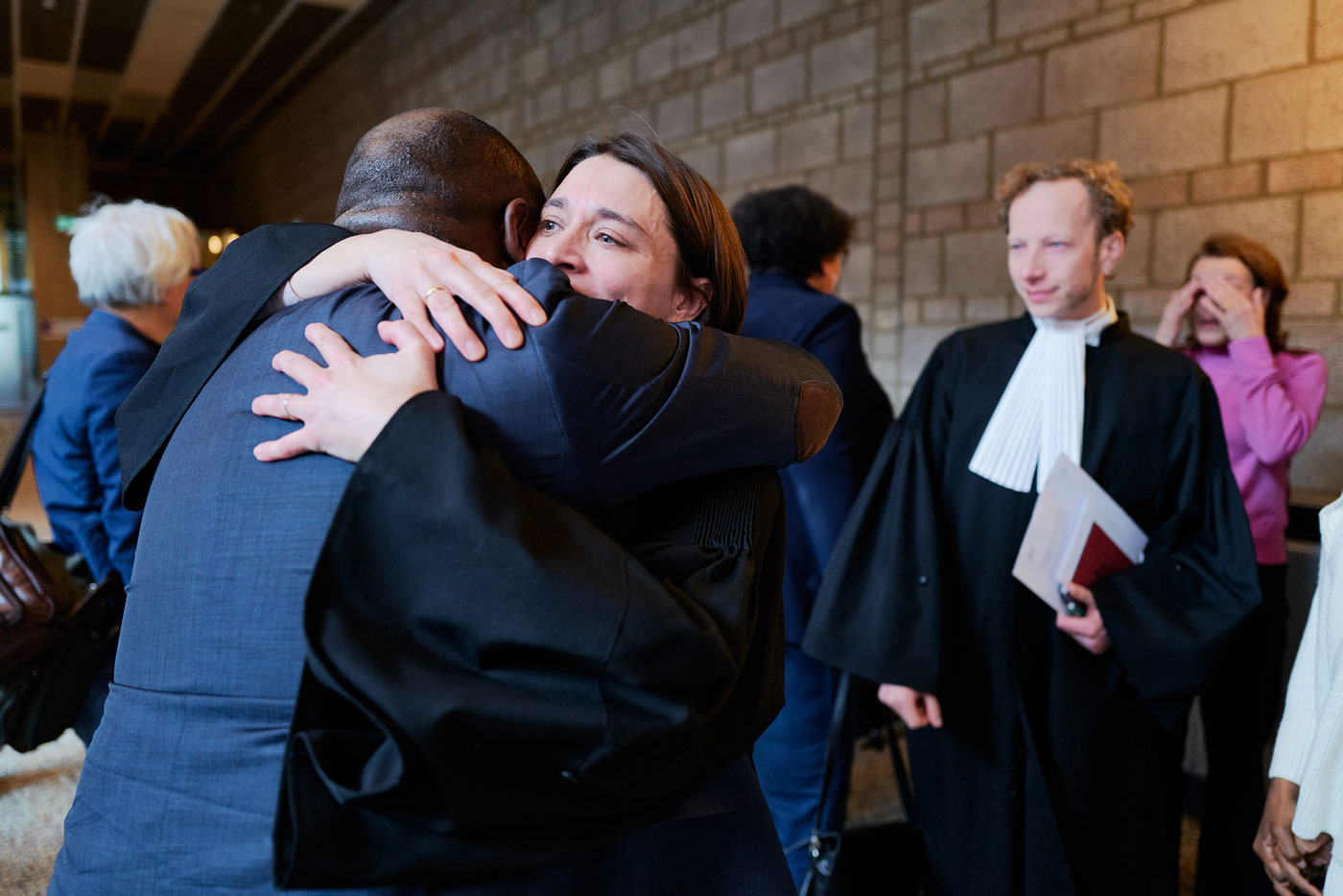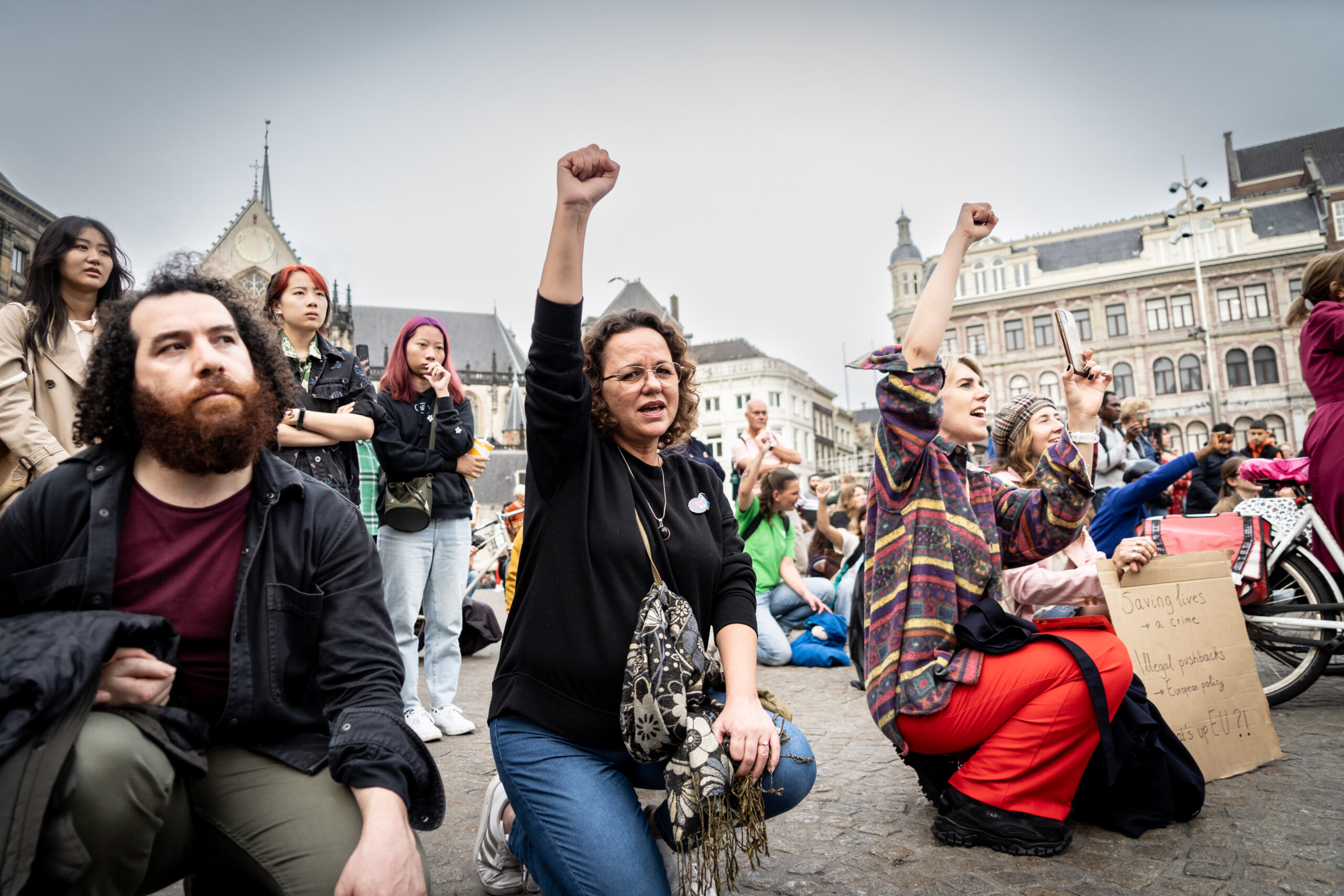The right to demonstrate is a nationally, European and internationally recognized human right. But the right to demonstrate and related right to freedom of expression is under pressure worldwide, including in the Netherlands.
Recently, the Universities of the Netherlands and the Association of Universities of Applied Sciences published the Directive on Protests by Universities and Universities of Applied Sciences. The Directive formulates some basic principles for demonstrations on and in grounds and buildings of universities and colleges. The principles include face-covering clothing, compulsory identification and the occupation of buildings. PILP is analyzing how the Directive relates to the right to demonstrate as it applies at educational institutions. PILP has long received questions about demonstrations at universities. Following the published Directive, we have now devoted our time to an analysis on this issue.
That educational institutions have issued a Directive recognizing that demonstrations are allowed at institutions is in itself a good step. However, there are also caveats to the Directive.
Each demonstration must be judged on its own merits, and any restriction or termination of a protest must be necessary and proportionate to be justified in light of the right to demonstrate and freedom of expression. General restrictions, as in the Directive, therefore clash with the right to demonstrate.
Moreover, it is questionable whether universities and colleges may place such restrictions. After all, it is the mayor who has the authority to make a decision about restricting or ending a protest. In doing so, the mayor will also consider the educational institutions’ right to property.




